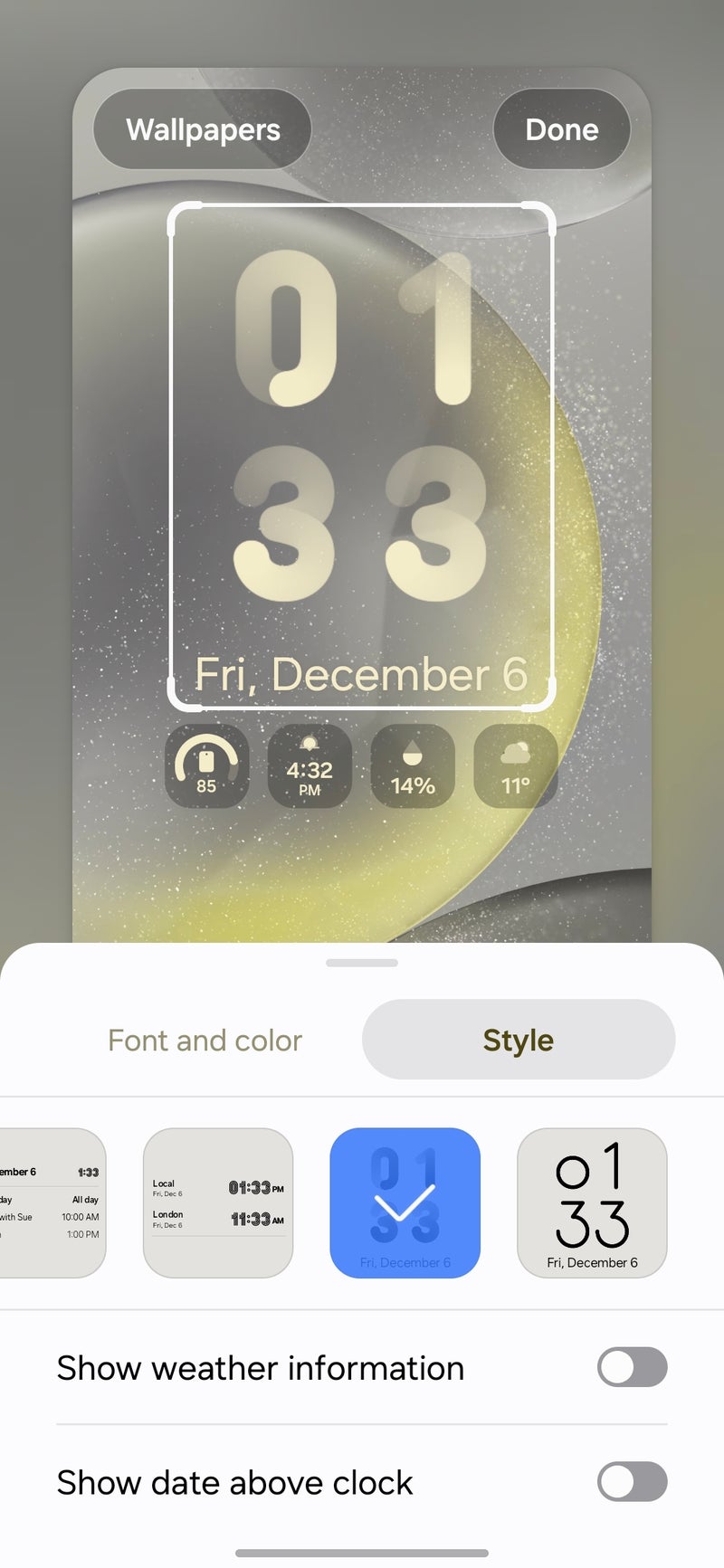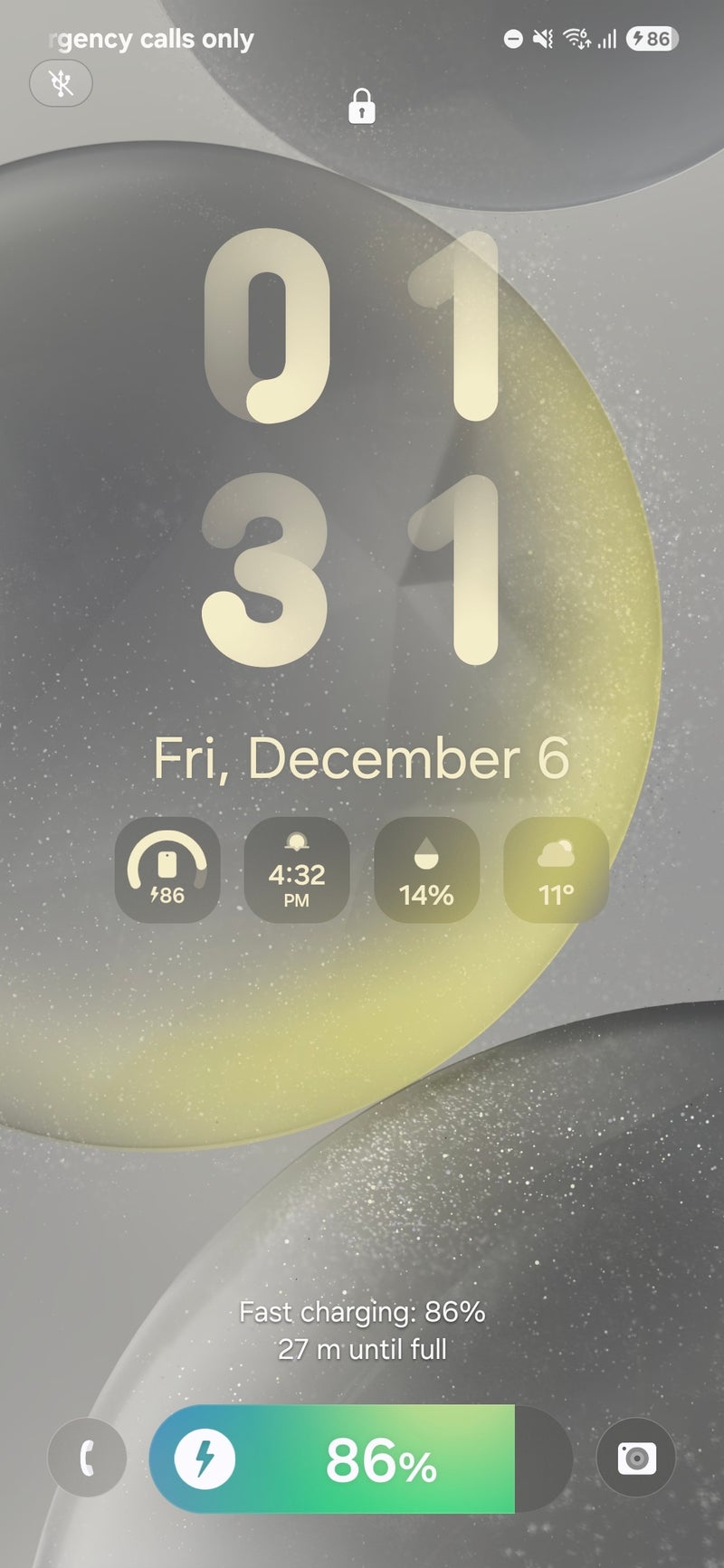Samsung One UI 7 release date, supported devices, and new features
We may earn a commission if you make a purchase from the links on this page.

Samsung's next major software update, One UI 7, was officially released on February 7, 2025, on the Galaxy S25 series.
After a lengthy delay, Samsung is readying itself to release the software update to older Galaxy flagships, starting with the Galaxy S24 series from April 7 (April 10 in the US). Many other Galaxy ex-flagship phones and tablets will follow suit in the coming weeks.
The very first One UI 7 beta was released to the Galaxy S24 series (Galaxy S24, Galaxy S24 Plus, Galaxy S24 Ultra) in early December 2024. It was initially launched in Germany, USA, South Korea, with the UK, Poland, India, and China joining later.
One UI 7 is based on Android 15. One UI is the most polished and feature-rich custom Android skin that Samsung has come up with thus far, surpassing the likes of TouchWiz and Samsung Experience by a mile. The current iteration, One UI 6, is a superb testament to Samsung's ability to come up with one of the better, if not the best, custom Android skins out there.
One UI 7 release date
Update: One UI 7 is now rolling out to Galaxy S24 family in Europe and the US.
One UI 7 was officially showcased on stage during the Samsung Galaxy S25 announcement on January 22, but the software was available as a beta earlier in 2024. The Galaxy S25, Galaxy S25 Plus, and Galaxy S25 Ultra feature it out of the box, and so do the Galaxy A56, Galaxy A36, and Galaxy A26 that were announced at MWC 2025.
When is it coming to the rest of the flagships, though?
After a healthy delay, Samsung is finally ready to unleash the One UI 7 software to the older flagship phones. An official rollout plan was announced a few days ago, announcing the end of our long wait.
The stable One UI 7 software will be released to European and Asian Galaxy S24 Ultra, Galaxy S24 Plus, and Galaxy S24 models, as well as the Galaxy Z Fold 6 and Galaxy Z Flip 6 on April 7.
After a healthy delay, Samsung is finally ready to unleash the One UI 7 software to the older flagship phones. An official rollout plan was announced a few days ago, announcing the end of our long wait.
Galaxy S24 users in the US will have to wait a little longer still, as the coveted update will arrive on April 10.
In the subsequent weeks, the release should expand to older flagship models and tablets, like the Galaxy S23, Galaxy S23+, Galaxy S23 Ultra, Galaxy S24 FE, Galaxy Z Flip 5, Galaxy Z Fold 5, Galaxy Tab S9, Galaxy Tab S9+, Galaxy Tab S9 Ultra, Galaxy Tab S10+, and the Galaxy Tab S10 Ultra.
| One UI version | Release date |
|---|---|
| One UI 7 (Android 15) | April 10, 2025 (USA) / April 7, 2025 (Europe, Asia) February 7, 2025 (Galaxy S25 series) |
| One UI 6.1.1 (Android 14) | July 10, 2024 |
| One UI 6.1 (Android 14) | January 17, 2024 |
| One UI 6 (Android 14) | October 30, 2023 |
One UI 7 new features
One UI 7 arrives with a healthy splash of visual changes, which constitute the majority of improvements and refinements. Here is a major rundown of everything new in One UI 7:
- Redesigned icons: Popular apps like Gallery, Camera, and Settings have received a major visual refresh. The old, minimalistic color scheme is replaced with brighter, more vibrant icons, adding personality and character that was previously missing from earlier versions.
- Improved widgets: Widgets have also been given a facelift. They’re now more informative, colorful, and visually engaging. Plus, they’re more uniform in size and design, offering a cleaner, more cohesive look. You can even hide their labels for a sleeker appearance.
One UI 7 visual redesign. | Image credit – PhoneArena
- Lock Screen customization: There are also new visual options available in the lock screen customization menu, with new clock faces, new animations, and customization features available. There's also a new Now bar, which pops up between the bottom lock screen shortcuts for some persistent notifications. For example, the Now Playing widget resides there, as well as the charging information when you plug in a charging cable. Persistent notifications from other apps might appear as well.
- Expanded folders: Folders can now be expanded. You can still have them appear as a single-icon on your home screen, previewing all apps inside, but if you choose to enlarge the view, you get a mini folder widget, which now occupies four cells and lets you tap on any of the apps inside.
- Revamped notifications and quick toggles: One of the biggest changes in One UI 7 is the split of the notifications and quick toggles panels. By default, they’re separated now—swipe from the top-right corner for quick toggles and from anywhere else for notifications. Both panels are customizable, and you can switch back to the classic layout if you prefer. Plus, you can now rearrange toggle groups just like on iOS, though there’s no option to remove individual toggles or add new ones.
One UI 7 visual changes are actually quite a lot. | Image credit – PhoneArena
The camera app has also been streamlined and simplified, bundling some not-so-often used buttons and features in a nested folder available at a tap away. This helps with immersion: it's no longer you versus the buttons, it's you versus the scene, and the pure photography aspect of taking pictures is firmly brought forward.
Animations appear much smoother than before, very comparable to iOS, and finally decent enough for a flagship Samsung phone.
One UI 7 eligible devices
Undoubtedly, many current and upcoming Samsung devices will be getting One UI 7 once it becomes available. As the software will be built on the upcoming Android 15, all Samsung phones that are scheduled to receive Android 15 will be getting One UI 7.
This includes (but might not be limited to) the following device families:
Samsung Galaxy flagship phones
- Galaxy Z Fold 6
- Galaxy Z Flip 6
- Galaxy S25 series
- Galaxy S24 series
- Galaxy S23 series
- Galaxy S22 series
- Galaxy S21 series
- Galaxy Z Fold 5
- Galaxy Z Flip 5
- Galaxy Z Fold 4
- Galaxy Z Flip 3
- Galaxy S23 FE
- Galaxy S21 FE
Samsung Galaxy mid-range and entry-level phones
- Galaxy A73
- Galaxy A72
- Galaxy A55
- Galaxy A54
- Galaxy A53
- Galaxy A35
- Galaxy A34
- Galaxy A33
- Galaxy A25
- Galaxy A24
- Galaxy A23
- Galaxy A15 (LTE+5G)
- Galaxy A14 (LTE+5G)
- Galaxy F55
- Galaxy F54
- Galaxy F34
- Galaxy F15
Samsung Galaxy tablets
- Galaxy Tab S9 FE+
- Galaxy Tab S9 FE
- Galaxy Tab S9 Ultra (Wi-Fi/5G)
- Galaxy Tab S9+ (Wi-Fi/5G)
- Galaxy Tab S9 (Wi-Fi/5G)
- Galaxy Tab S8 Ultra (Wi-Fi/5G)
- Galaxy Tab S8+ (Wi-Fi/5G)
- Galaxy Tab S8 (Wi-Fi/5G)
Follow us on Google News



















